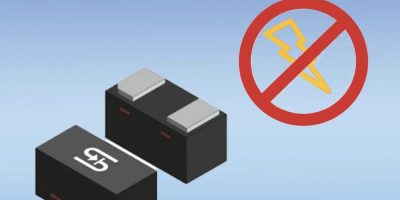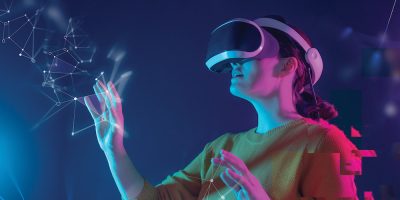Taiwan Semiconductor has introduced a new series of new ultra-small ESD protection devices optimised for wearables and other high-density electronic products. All DFN0603-packaged models in the 3.3V and 5.0V TESDx Series exceed the 8kV IEC61000-4-2 20kV contact discharge standard as well as IEC6100-4-5 4A peak pulse current, with margin. TESDx Series devices utilise Taiwan Semiconductor’s proprietary clamping cells to prevent overvoltage damage from ESD and lightning on control, power and data lines. Additionally, their industry’s lowest capacitance allows for full USB 3.0 data rates without compromise.
Wearable
Ceva Bluetooth low energy IPs bring ultra-low power wireless connectivity
Ceva has announced that Alif Semiconductor has licensed and deployed the Ceva-Waves Bluetooth Low Energy and 802.15.4 IPs in its Balletto family of wireless microcontrollers.
The Balletto family is a complete Edge AI/ML microcontroller solution for connected IoT platforms with integrated Bluetooth Low Energy 5.3 and 802.15.4 wireless subsystem and a dedicated network co-processor, enabling connectivity and machine learning in a single chip. The Balletto family delivers up to 50x boost in machine learning performance and inference efficiency versus traditional MCUs that lack neural co-processors. The Ceva-Waves Bluetooth Low Energy IP provides Balletto MCUs with the robust connectivity at ultra-low power consumption, and supports Bluetooth LE Audio and Auracast broadcast audio, for customers who wish to leverage Balletto to create highly differentiated wireless audio products. The Balletto family also relies on Ceva-Waves 802.15.4 IP for Thread, Zigbee and Matter support in smart home applications.
Omnivision launches newest generation of the World’s smallest shutter image sensor
Omnivision has announced the new OG0TC BSI global shutter (GS) image sensor for eye and face tracking in AR/VR/MR consumer headsets and glasses. For the first time ever, Omnivision is bringing its patented DCG high dynamic range (HDR) technology to the AR/VR/MR market in the 2.2-micron (µm) pixel OG0TC GS image sensor.
Farnell now stocks Murata’s UWB and LoRa modules
Farnell is now offering Murata’s latest UWB and LoRa connectivity modules for convenient wireless integration. These modules are designed to simplify wireless development and certification, making it easier to incorporate wireless capabilities into a wide range of applications.
About Weartech
This news story is brought to you by weartechdesign.com, the specialist site dedicated to delivering information about what’s new in the wearable electronics industry, with daily news updates, new products and industry news. To stay up-to-date, register to receive our weekly newsletters and keep yourself informed on the latest technology news and new products from around the globe. Simply click this link to register here: weartechdesign.com







